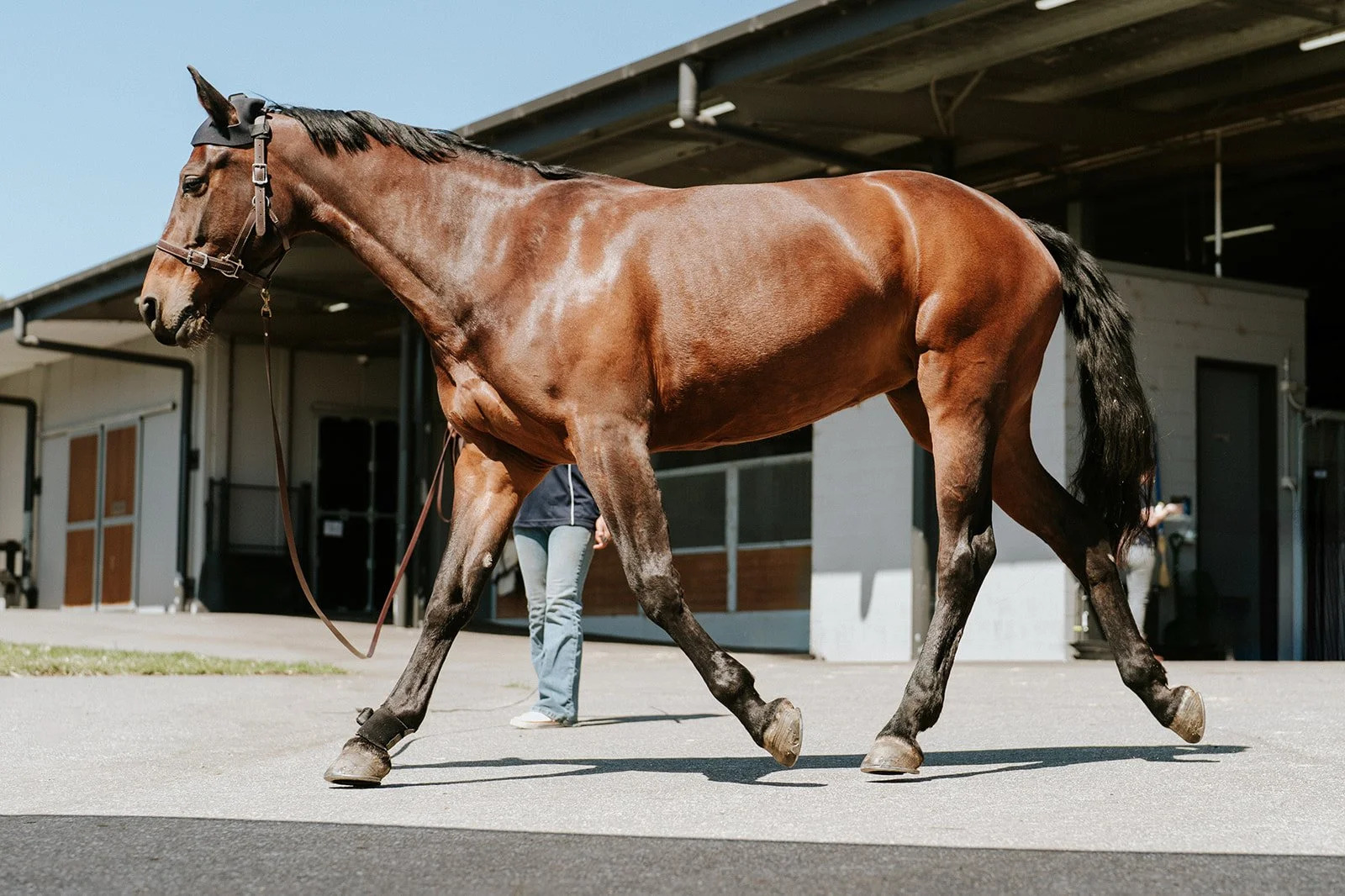
A Pre-purchase examination (PPE) is normally carried out in five stages (although all stages may not be completed if a problem is evident at an early stage). A basic two stage pre-purchase exam may also be requested.
Frequently asked questions
Firstly, a detailed history of the horse is obtained from the vendor / agent. The identification of the horse is checked against documentation. The horse is then examined at rest and physical examination is undertaken. The eyes are examined in a darkened stable with an ophthalmoscope and the heart is listened to on both sides of the chest. The front teeth (incisors) are checked to ensure the approximate age of the horse matches documentation. A detailed musculoskeletal examination is performed. The limb joints are palpated for evidence of joint effusion, soft tissue swelling, enlargement, range of motion and pain. The prominent tendon and ligament structures of the pastern and cannon and upper limb regions are palpated for swelling, heat and pain and evidence of previous injury. Examination of the cardiovascular and respiratory system and a brief neurological examination are performed. The back is assessed for muscular and vertebral pain and the range of the thoraco-lumbar and sacroiliac regions. Foot examination considered foot size, shape and symmetry as well as heel support. The horse is checked over for any abnormalities, such as lumps and scars, and these will be recorded.
This phase includes assessment of the horse standing square, walking and trotting in a straight line, being backed up for several strides and performing tight turns on both reins. This takes place on a on a firm, level surface if possible.
Flexion tests are then performed, where the leg is held up for 45-60 seconds and the horse is trotted away in a straight line. A flexion test is considered positive if the horse takes more than 3-5 steps to return to a normal gait. A positive flexion test could indicate a problem with a joint and/or soft tissue structure and will be considered along with the rest of the examination.
Lunging on both reins on a firm or sand arena commonly performed.
Abnormal breathing sounds may indicate an airway problem that could impair athletic ability. This stage needs to be tailored to suit the horse and its intended purpose.
The horse is returned to the stable and the saddle and tack removed. The heart and lungs are assessed as the horse recovers from the exercise phase. The horse’s normal behaviour in the stable can be observed again and some vices may be displayed after exercise so may be observed during this time.
The final stage involves trotting the horse up in hand again. This is to assess any changes or lameness that may have arisen from the exercise or recovery phases.
In some cases it may be necessary to perform additional examinations – radiographs and ultrasound examination of tendons or ligaments, or carrying out endoscopic examination of the upper airways. These procedures may only be undertaken with the consent of the current owner and will incur additional costs to the buyer.
A blood sample can to be taken to assess for any current medical conditions as well as stored or assessed for the presence of medications.
